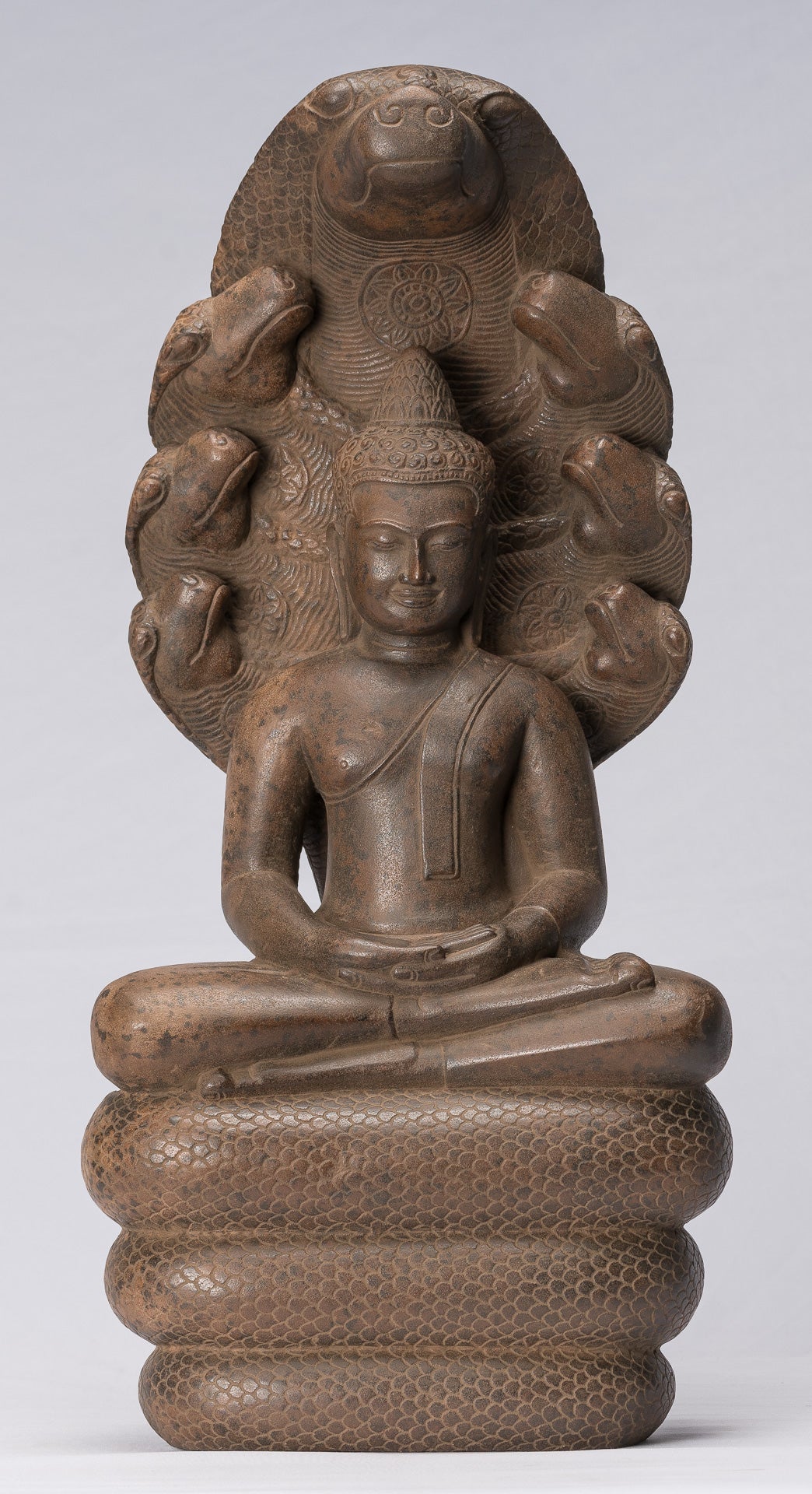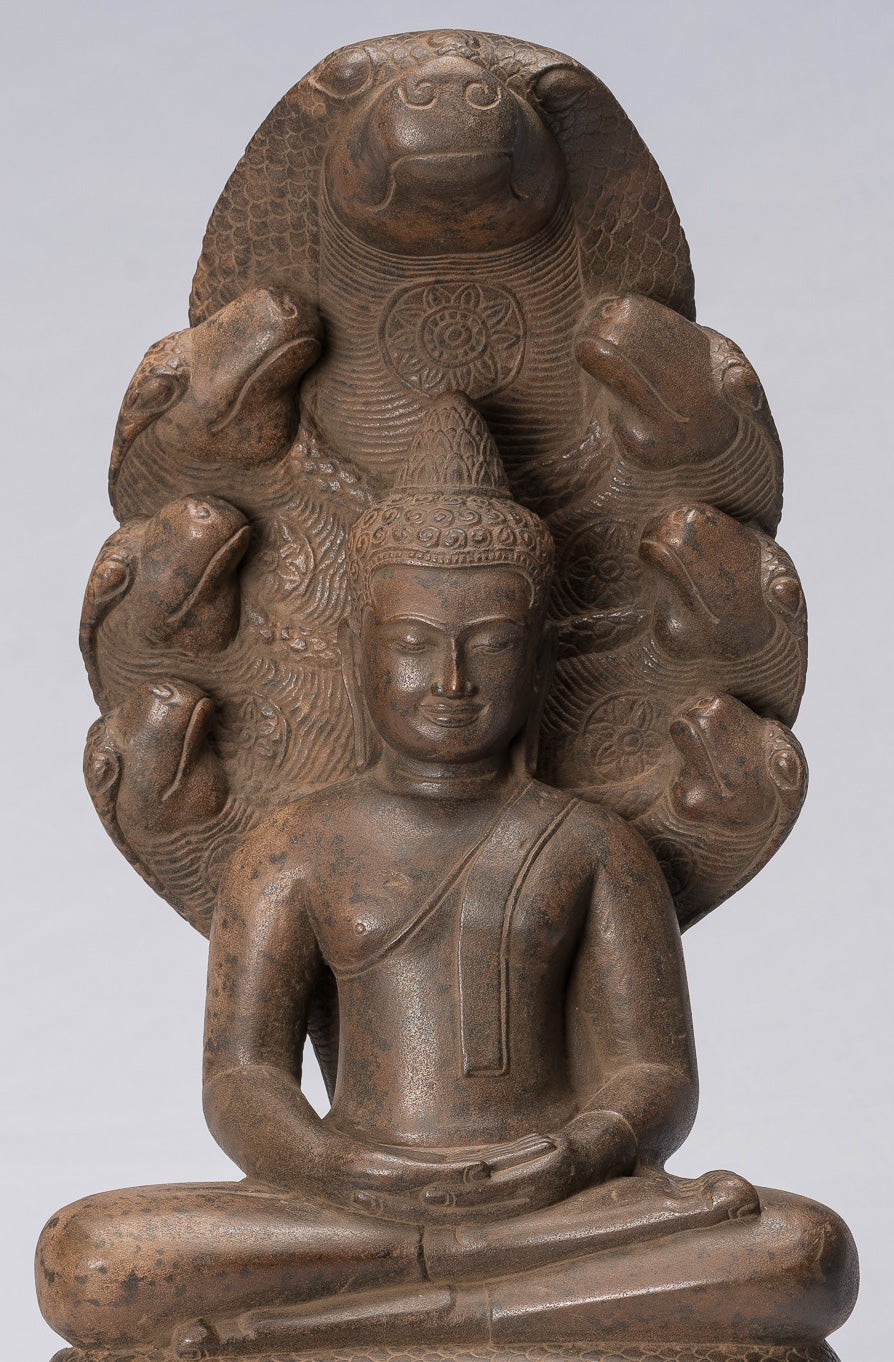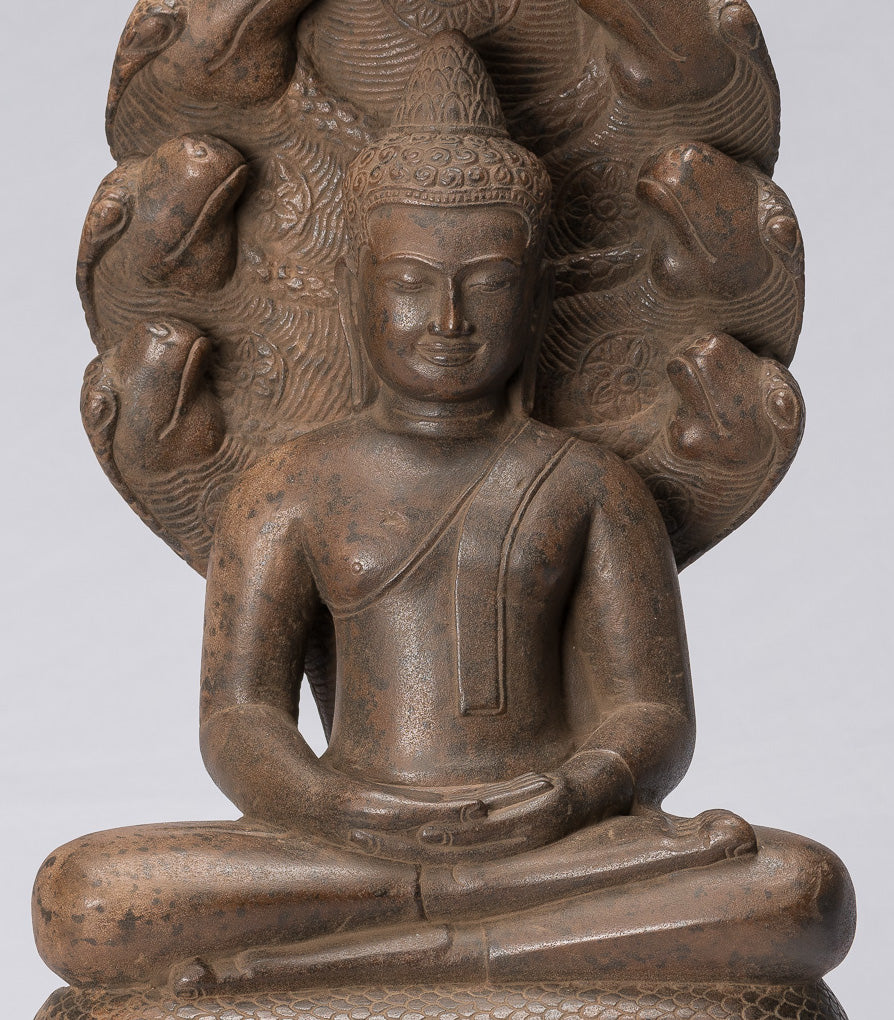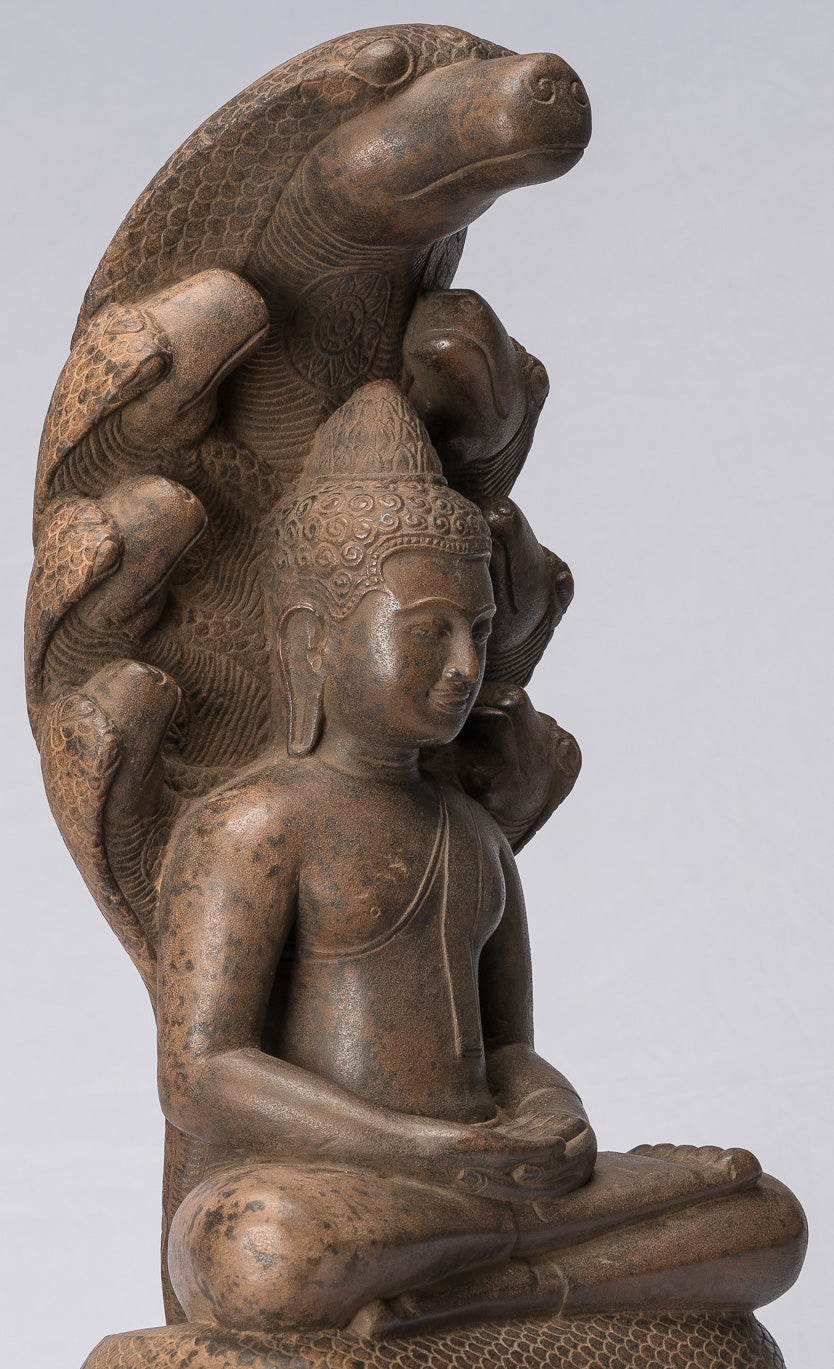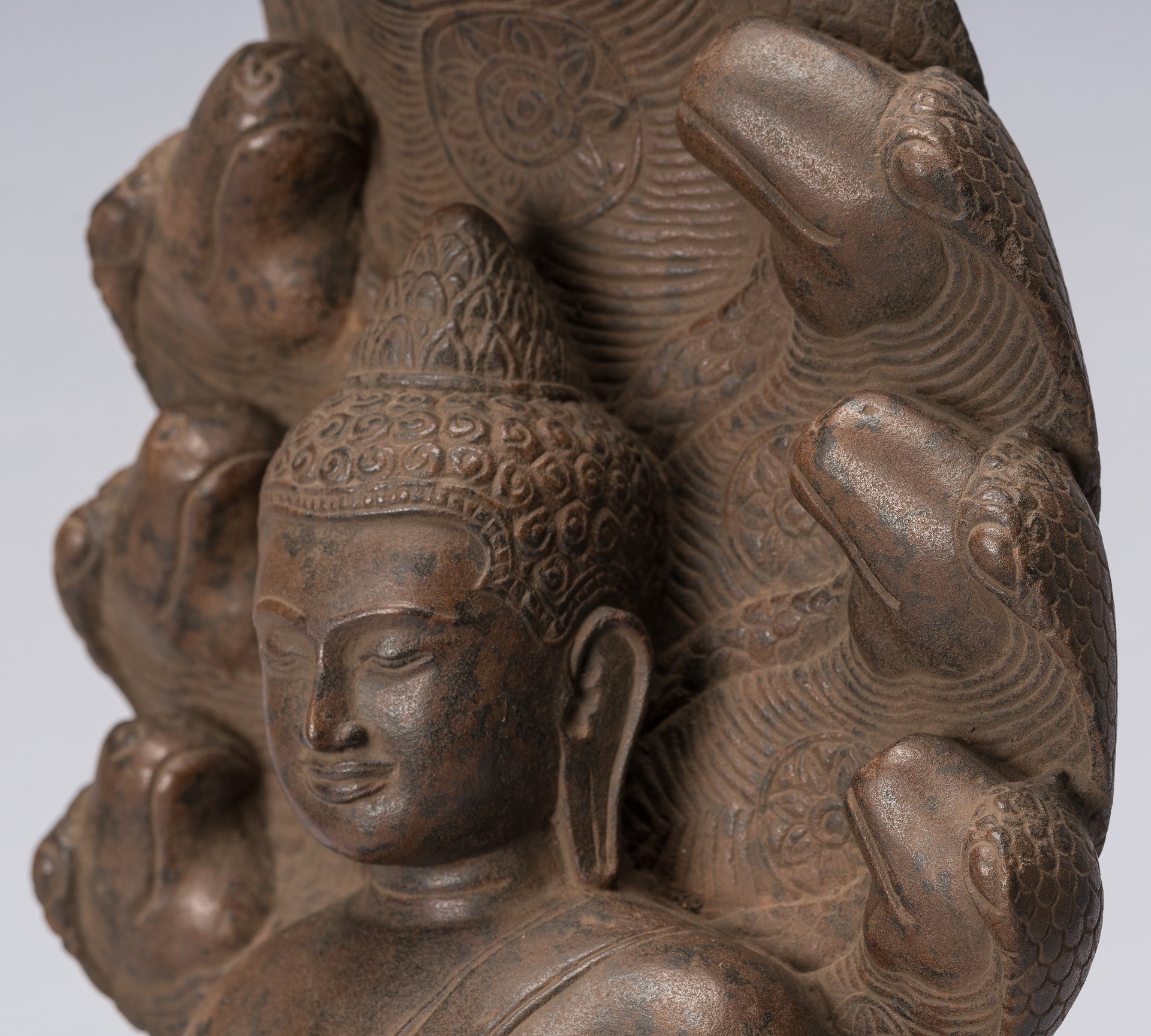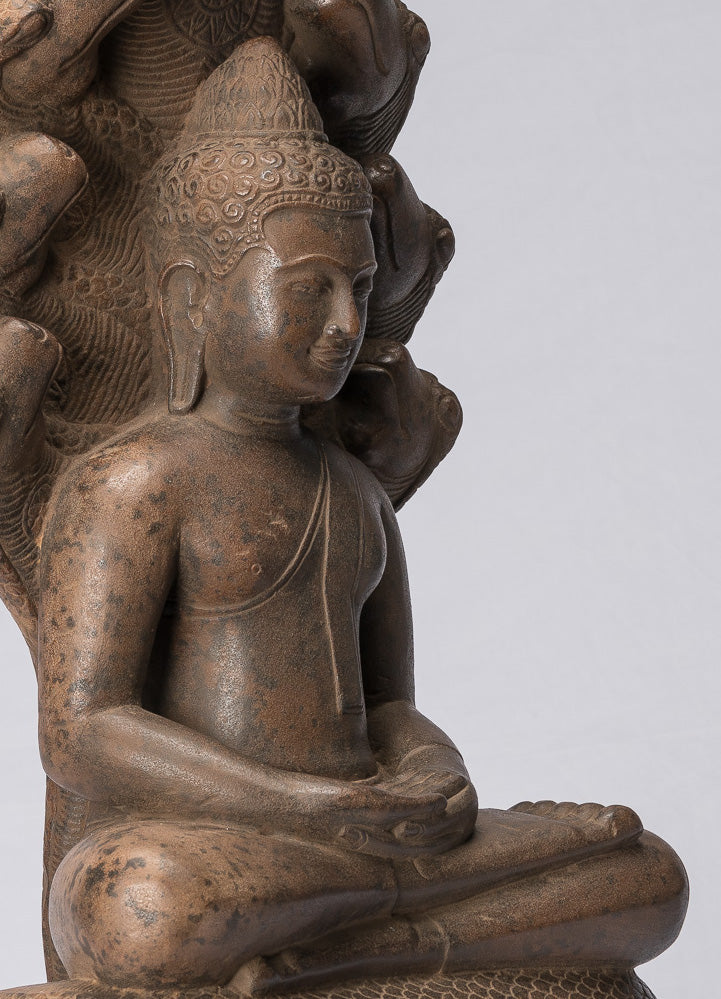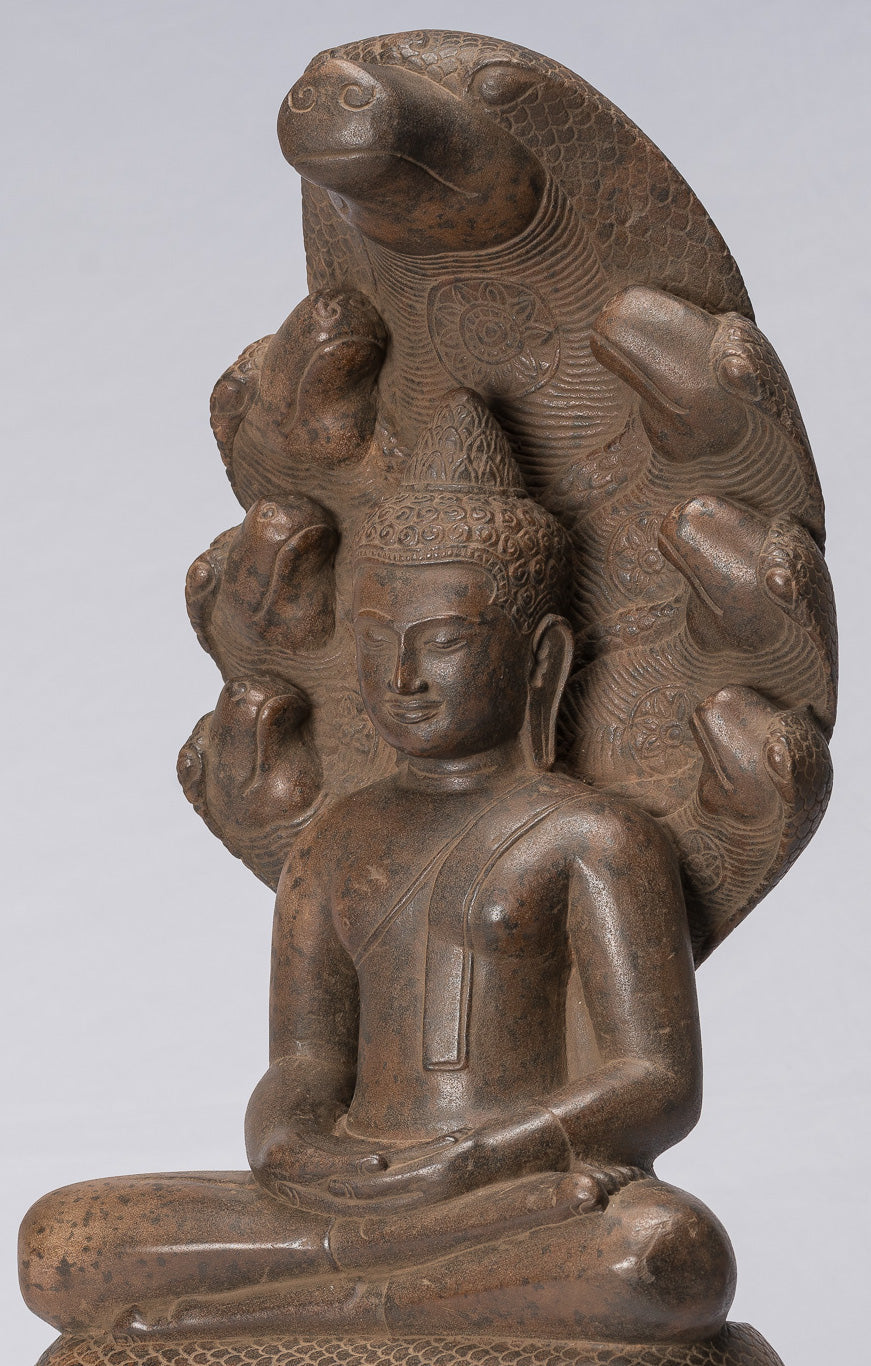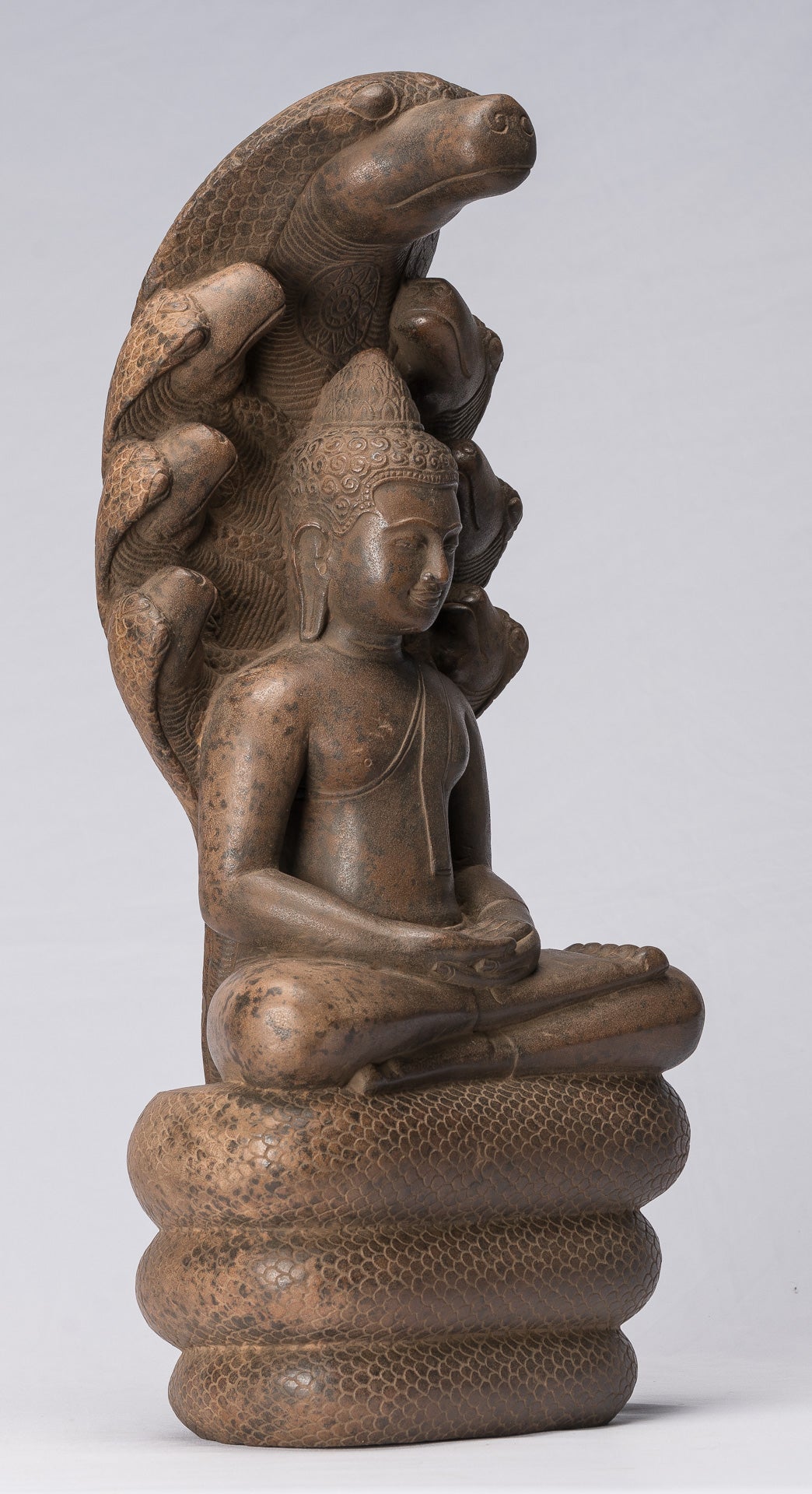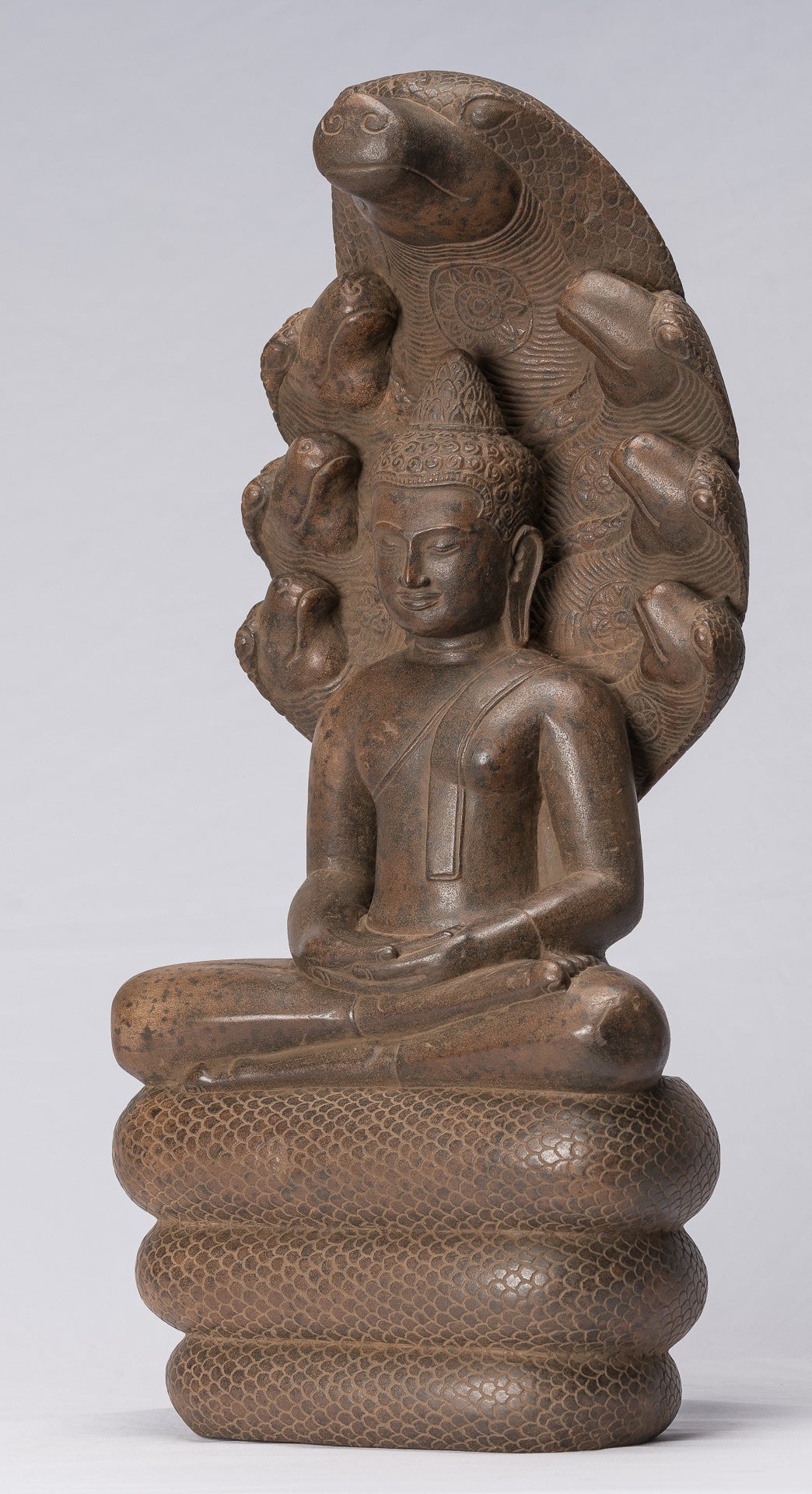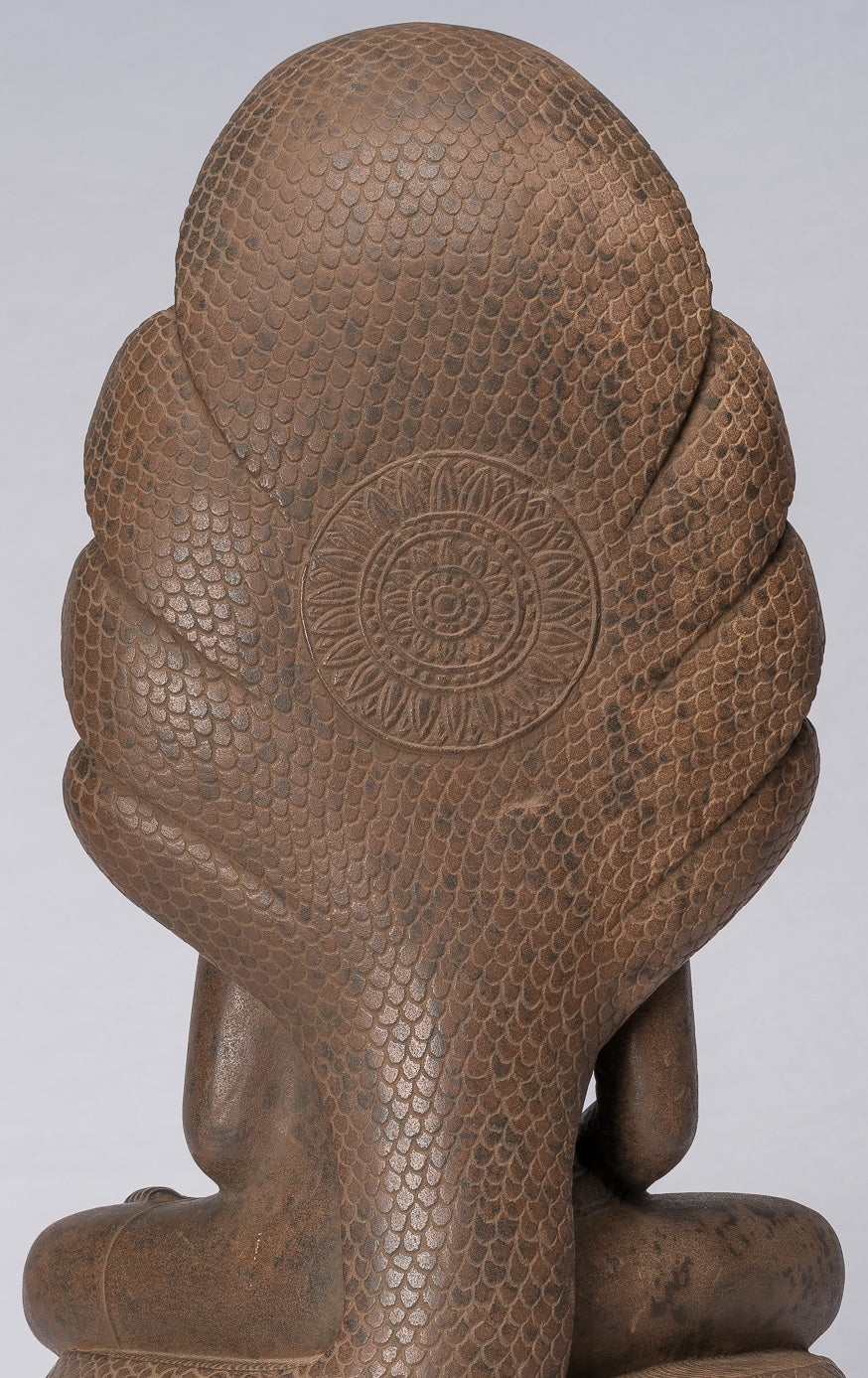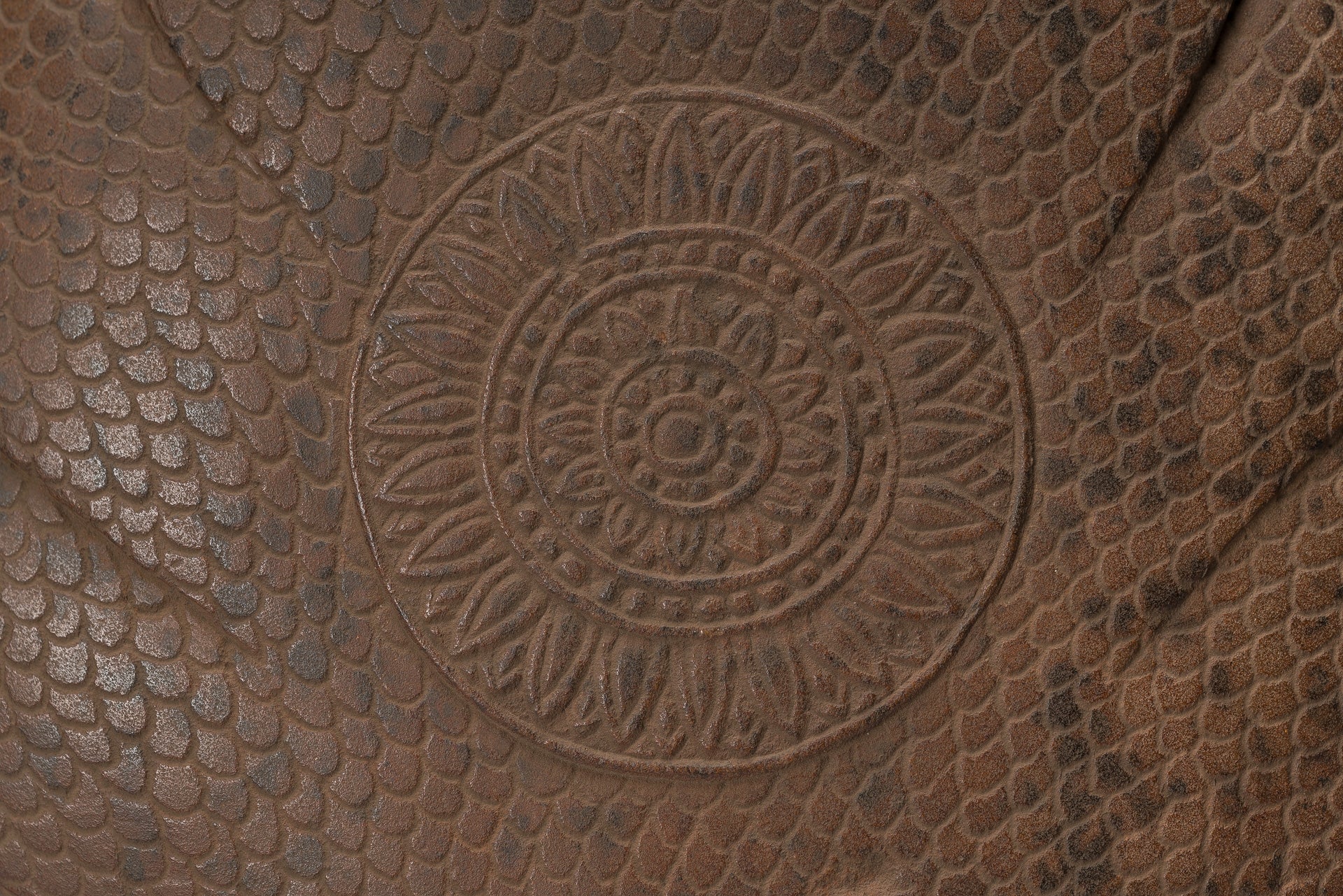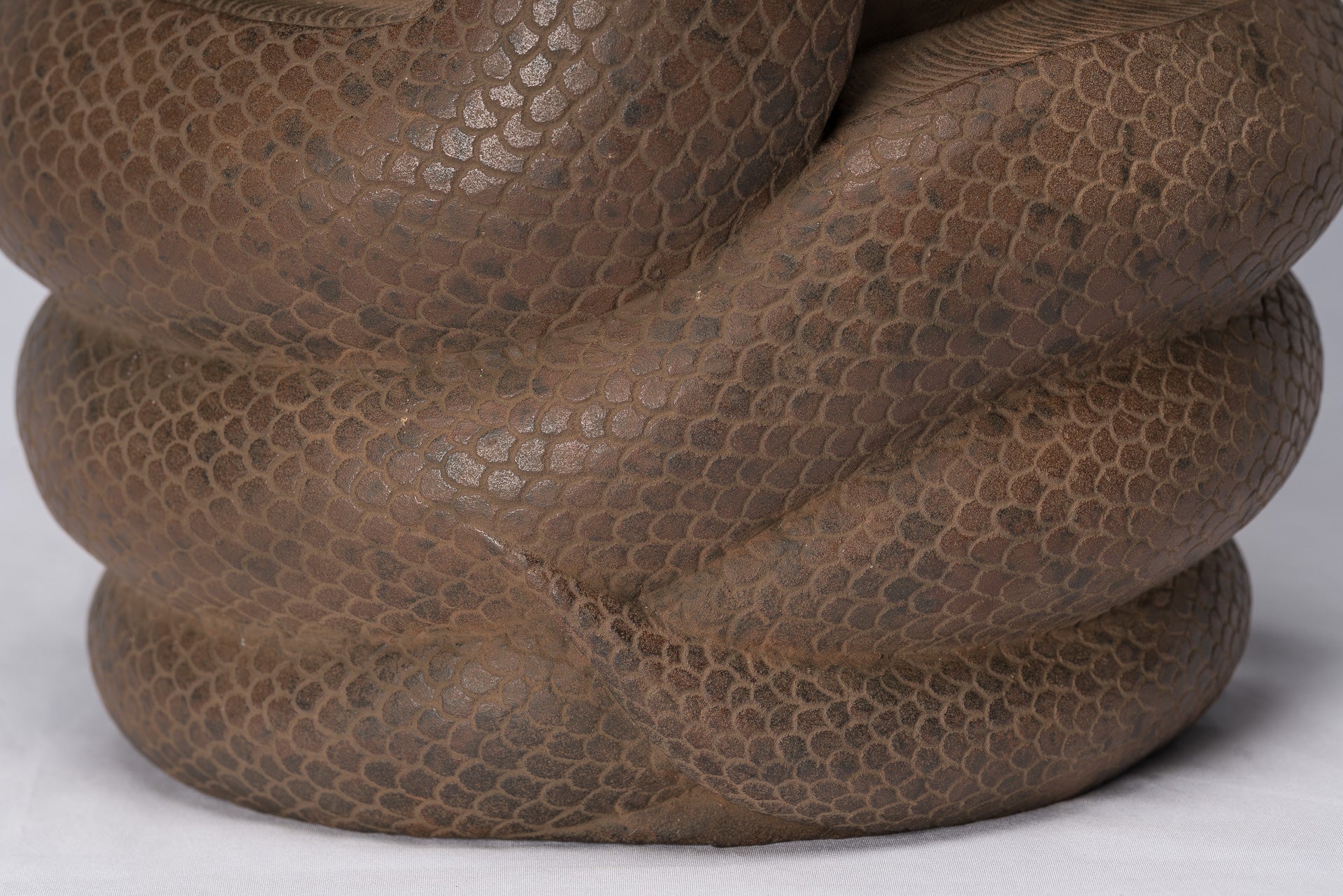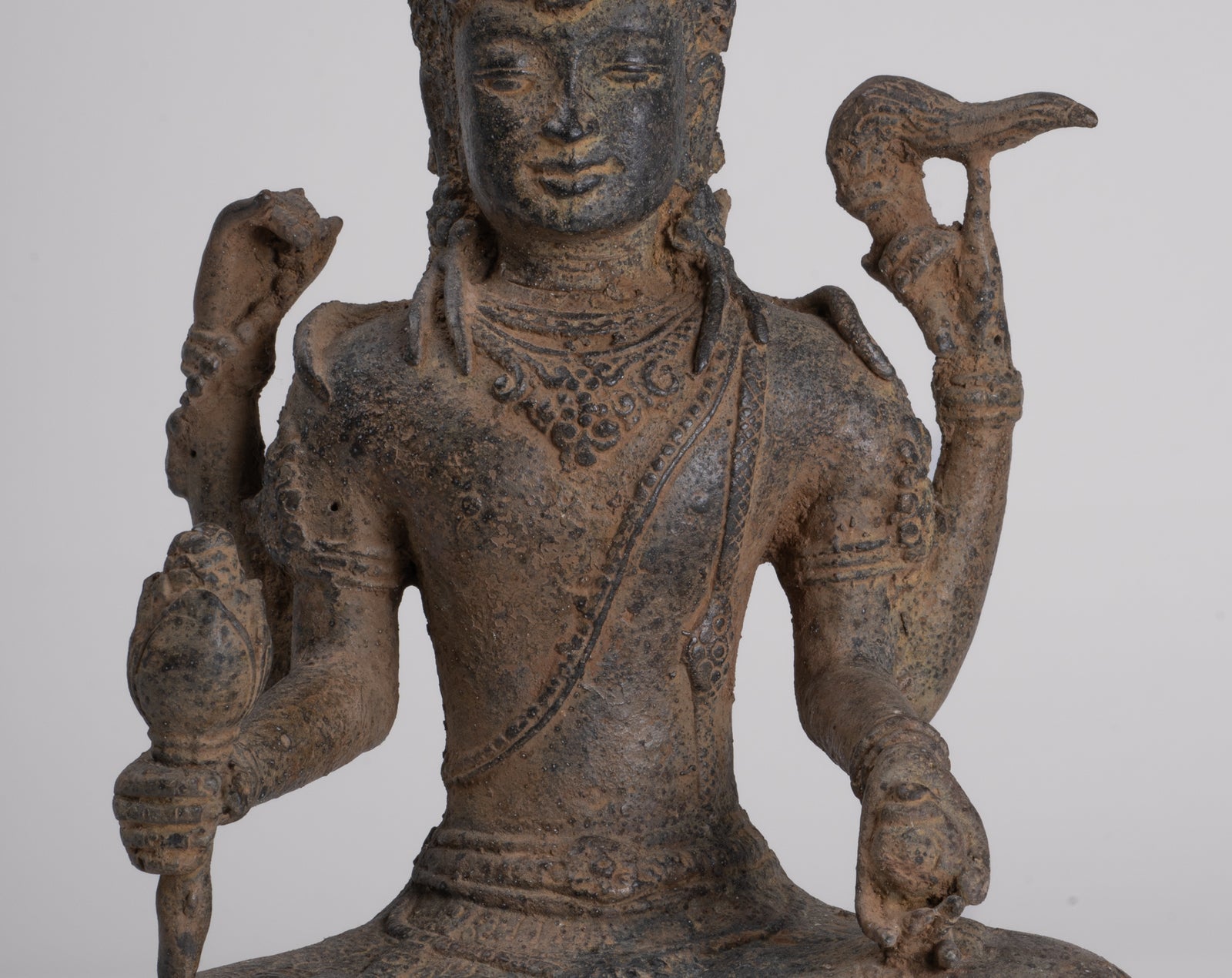-
Antique Angkor Wat Style Khmer Seated Stone Naga Meditation Buddha - 56cm/22"
Measures (Height) 56cm/22"
A serene seated meditation Amitabha Buddha, in 12th century Angkor Wat style, perfect for those searching for serenity, meditation or an antidote to desire.
Here Buddha is seated on a three-tired throne, with the flaring head of a giant Naga, the serpent King Muchalinda, rising behind protectively behind. His hands are in the Dhyana mudra, the gesture of Meditation.
The Buddha's face is serene, with a naturalistic and warm expression; his head is topped by a detailed ushnisha, in the Angkor Wat style.
Buddha Amitbha's hands are held in a meditation Mudra. Fingers barely touching and gently folded over the lap with palms facing upward - representing gentleness and purity. In his hands he holds a alms bowl demonstrating the charity and generosity of the Buddha. His eyes are downcast, his compassionate face bestowing peace, blessings and inner serenity on his devotees.
The serpent is well rendered and symmetrical. The throne is formed by the coils of the serpent. The story told here being that Muchalinda protected the Buddha from heavy rain. This iconography is typical of the reign of Khmer King Jayavarman VII (ca. 1181 to 1218 CE), who established a cult based around it.
The Buddhas hands are in Dhyana Mudra, the hand gesture that promotes the energy of meditation, deep contemplation and unity with higher energy.
The Amitabha Buddha symbolizes mercy and wisdom. Tantric meditation on Amitabha is an antidote to desire. He reigns over Sukhavati (the Western paradise) which is also called the Pure Land. Those reborn in the Pure Land experience the joy of hearing Amitabha teach the dharma until they are ready to enter Nirvana.
The rear of the Naga depicts a Mandala, symbol of meditation and serenity.
In various spiritual traditions, mandalas can be used to focus the attention of practitioners and adepts, as a spiritual guidance tool, for establishing a sacred space and as an aid to meditation. In the Eastern religions of Hinduism, Buddhism, Jainism and Shinto it is used as a map representing deities, or especially in the case of Shinto, paradises, kami or actual shrines.
A mandala generally represents the spiritual journey, starting from outside to the inner core, through layers.
The statue is carved in the round, rather than as a relief on a stela. From this, we can infer that Khmer sculptors would have desired their artwork to be viewed from all sides and thus placed in the center of temples rather than against a wall. While this artwork was religious - priests supervised its execution - its realism is unmistakable.
Given the nature of the piece a wooden crate will be built to encourage safe shipping.
This traditional in appearance piece is sure to add serenity to your home, office or sacred space.
SATISFACTION GUARANTEE - We have been offering SE Asian Art for many years and are proud of the reputation we have developed for fair and honest listings. However, if for any reason, whatsoever, you are unhappy with your purchase please just let us know and we will provide a full refund. We want you to be 100% happy with your purchase.
-
The majority of orders will be shipped with DHL. This is a secure, express and fully tracked service.
Items less than 2Kg we typically ship using Royal Mail.
Once we receive your order we try to ship all orders the same or next working day.
Large and/or fragile pieces requiring palletising, specialist crating and/or extra packaging may take a little longer. Palletised shipments will be delivered curbside.
All orders over 35 GBP will be shipped free of charge.

-
We genuinely hope that all purchases delight.
However, if they do not, regardless of reason, we will refund all orders upon receipt of the unwanted item. Just notify us within 14 days of receiving your order that you wish to make a return and send the piece back to us with 30 days of delivery.
Let Us Help You Find The Piece You Desire
Let Us Help You Find The Piece You Desire
Today I received the marvelous Aspara-figure. My wife got jealous but now I am happy having two wifes. Thank you so much for everything.
Robert, Düsseldorf, Germany
Buddha's home! OMG..what a beauty !!! I love this piece! Thank you so much for all!
Ioana, Suceava, Romania
Confirming receipt of the DHL package today! Looks perfect.
Mitch, Palm Springs, CA, USA


